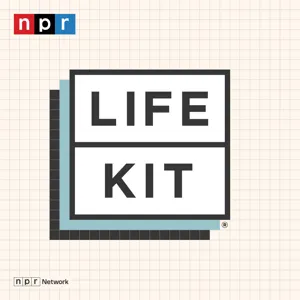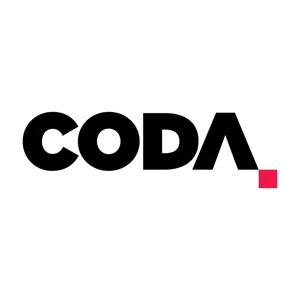Podcast Summary
Learning CPR can save lives: Learning CPR can double or triple survival rates, and it's important for everyday people to know this essential skill as cardiac arrest can happen to anyone, at any time. Listen to NPR's LifeKit episode to learn the basics of CPR for adults, children, and infants, including recognizing when it's necessary and using an AED if available.
Knowing CPR can be a matter of life and death. According to Catherine Y. Brown, founder of Learn CPR America, only about 40% of people who suffer from cardiac arrest receive CPR from a bystander or layperson in the US. This means that there's a significant opportunity for everyday people to make a difference by learning this essential skill. CPR can double or even triple survival rates, and it's important to remember that cardiac arrest can happen to anyone, at any time. In today's episode of LifeKit from NPR, they will teach you the basics of how to do CPR on adults, children, and infants. They will cover topics such as recognizing when CPR is necessary, the correct techniques, and the use of an AED if available. Additionally, producers Marielle Segarra and Sylvie Douglas took a Red Cross certification course for CPR and first aid to provide audio from the class. Support for NPR comes from Whole Foods Market, encouraging listeners to host a celebratory brunch for less with wallet-friendly finds like whole smoked Atlantic salmon, mini quiches, and organic everything bagels. Plus, visit the floral department for a beautiful bouquet to jazz up the table. And if you're looking for a way to earn rewards on your everyday purchases, consider applying for Apple Card, which offers up to 3% daily cash back on Apple purchases, 2% on all other Apple Card purchases made with Apple Pay, and 1% on everything else.
Learning CPR: A Matter of Life and Death: CPR is a lifesaving technique used when someone's heart stops and they're not breathing. Shout, tap, shout before acting, call 911, and delegate tasks to increase chances of survival.
Knowing how to administer CPR can be a matter of life and death. CPR, or cardio pulmonary resuscitation, is a lifesaving technique used when someone's heart stops beating and they're not breathing. The heart part refers to the cardio aspect, while pulmonary refers to the lungs. Resuscitation means bringing them back to life. Sudden cardiac arrest can be caused by various reasons, some known and some unknown. Therefore, it's crucial to ensure the scene is safe before checking for signs of life. If you come across an unconscious person, tap their shoulders and shout, "Are you okay?" This is called the "shout, tap, shout" method. If there's no response, call 911 and delegate tasks to bystanders. Remember, clear instructions can significantly increase the person's chances of survival.
Act Quickly and Focus on Chest Compressions During a Cardiac Emergency: During a cardiac emergency, prioritize chest compressions, use the heel of one hand, keep arms straight, push down at least 2 inches, maintain a 30:2 compression-to-breath ratio, and consider hands-only CPR for non-medical personnel.
During a cardiac emergency, it's crucial to act quickly and start CPR as soon as possible, focusing on chest compressions rather than checking for a pulse or performing rescue breaths unless you are a medical professional. The compressions should be done with the heel of one hand in the center of the chest, keeping arms straight and pushing down at least 2 inches deep. The compression-to-breath ratio is 30:2, and songs like "Staying Alive" can help maintain the correct cadence. Hands-only CPR is generally taught to non-medical personnel due to its effectiveness, and if rescue breaths are attempted, they should be given with the head tilted back, one hand on the forehead, and two fingers under the chin. For children or infants, CPR techniques differ, and specialized training is recommended.
Effective CPR techniques for infants and children: Use correct hand placement, chest compressions, and rescue breaths during CPR for infants and children due to their smaller lungs. Utilize AEDs during cardiac arrests, following voice prompts to apply pads and deliver shocks, then resume CPR.
When providing CPR to infants and children, it's crucial to use regular techniques, including chest compressions and rescue breaths, due to their smaller lung capacity and potential respiratory issues. The positioning can be challenging, so classes teach using a 2-thumb circular hand technique. Additionally, automated external defibrillators (AEDs) can be life-saving during cardiac arrests. To use an AED, first, turn it on and follow voice prompts to apply pads to the patient's bare chest, ensuring everyone stands clear before delivering a shock. After delivering a shock, resume CPR and continue until help arrives. If there are multiple people, they can take turns after every 5 cycles. It's essential to have equal access to CPR training and AEDs in all communities, as disparities exist in underserved areas.
Perform CPR on Unconscious Adults or Teenagers: Call 911, perform CPR (hard and fast chest compressions), and use an AED if available to save lives.
Even if you haven't received formal training, you should still attempt to administer CPR to an unconscious and unresponsive adult or teenager. This action is protected by law, and it's essential to remember that a person in cardiac arrest cannot be harmed further. Furthermore, everyone should learn CPR, and creative methods like the AED game can help make the learning process more engaging. During a cardiac emergency, call 911, perform CPR (pushing hard and fast in the center of the chest), and if possible, have someone else call for help and locate an AED machine. Remember, the goal is to save lives and make CPR a standard skill for everyone.
Using an AED during a cardiac emergency: During a cardiac emergency, use an AED by turning it on, placing pads on the chest, following prompts, and continuing CPR until help arrives or the person wakes up. For children and infants, rescue breaths and an encircling thumbs technique are recommended. Take a training course to learn effectively.
During a cardiac emergency, using an Automated External Defibrillator (AED) involves turning it on, placing the pads on the person's chest, and following the prompts. If a shock is administered, ensure no one touches the victim. After the shock, continue CPR until the person wakes up or help arrives, keeping the pads on their chest. For children and infants, rescue breaths are recommended, and an encircling thumbs technique is used for infants. It's essential to take a training course to learn these skills effectively. Practicing these techniques builds confidence and empowers individuals to respond in emergencies. For more information on life-saving skills, check out NPR's Life Kit podcast, which covers topics like swimming and emergency preparedness. Remember, your feedback and episode ideas are welcome at lifekit@npr.org. This episode of Life Kit was produced by Sylvie Douglis, with engineering support from Valentino Rodriguez Sanchez. Stay informed and subscribe to the Life Kit newsletter at npr.org/lifekitnewsletter.





